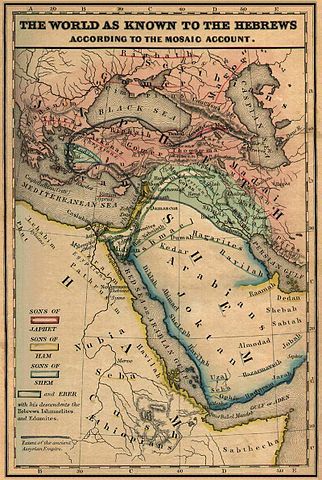
Ashkenaz is shown in Phrygia in this 1854 map of “The World as known to the Hebrews” (Lyman Coleman, Historical Textbook and Atlas of Biblical Geography) | (c) en.wikipedia.org/wiki/Ashkenaz
In the fascinating realm of medieval Ashkenaz, a distinct body of law known as Jewry Law emerged alongside Jewish law, shaping and regulating Jewish behavior from an external perspective. While Jewish law encompasses the vast expanse of Jewish thought recorded in biblical texts, the Mishnah, Talmud, Shulchan Aruch, and Maimonides’ Codes, Jewry Law delves into the legal framework governing Jewish conduct within the wider society. This blog post seeks to explore the origins and intricacies of Jewry Law, particularly in the context of medieval Ashkenazic Germany.
Embark on a riverboat journey with kosher river cruises and unveil our shared history. Indulge in stylish travel, exquisite kosher dining, and daily services. Explore magnificent destinations in one of the best unparalleled onboard luxury kosher cruises. Elevate your glatt kosher vacations to extraordinary heights.
Understanding Medieval Legal Perspectives
To grasp the significance of Jewry Law, it is essential to step out of our contemporary mindset, deeply rooted in democratic societies. Unlike the notion that law applies universally and uniformly to all individuals within a particular jurisdiction, medieval law operated based on one’s personal status within the societal hierarchy. Factors such as nobility, slavery, church affiliation, and being Jewish determined which set of laws would be applicable. This perspective contrasts sharply with the modern concept that the law of the land applies to everyone equally, regardless of their social standing. In fact, the Talmudic phrase “dina de’malkhuta dina,” meaning “the law of the land is the law,” emerged as Jewish scholars sought to determine the proper conduct of Jews within Persian society.
Overlapping Legal Systems
During the medieval period, various legal systems coexisted, each with its own set of rules and implications. The remnants of Roman law still held influence, particularly since Jews had been granted Roman citizenship since the third century. Additionally, classical feudal law introduced peculiar practices such as trial by ordeal or combat, wherein the resolution of a dispute relied on supernatural intervention or physical strength. These systems of law were intimately tied to one’s personal status and could significantly impact the proceedings of a trial. It is crucial to understand that medieval law was not concerned with universal rights but rather privileges granted based on religion, gender, age, social status, and class. The intricate interplay of these factors created a complex legal landscape in which the position of Jews warrants further exploration.
The Role of Jews in the Legal Framework
Against this backdrop, the position of Jews within the legal framework of medieval Ashkenaz demands scrutiny. How did Jews navigate this intricate system? What privileges and obligations were granted to them based on their religious identity? These questions will guide our exploration in subsequent discussions, shedding light on the multifaceted nature of Jewish existence within this complex legal tapestry.
Delving into the realm of Jewry Law in medieval Ashkenaz unveils a captivating legal landscape shaped by societal hierarchies and intersecting legal systems. The unique position of Jews within this framework calls for a comprehensive understanding of the privileges, rights, and challenges they encountered. By exploring this subject, we hope to shed light on an often-overlooked aspect of medieval Jewish history, enriching our understanding of the complex legal dynamics of Ashkenazic Jewry. Stay tuned for further insights into this captivating topic.
